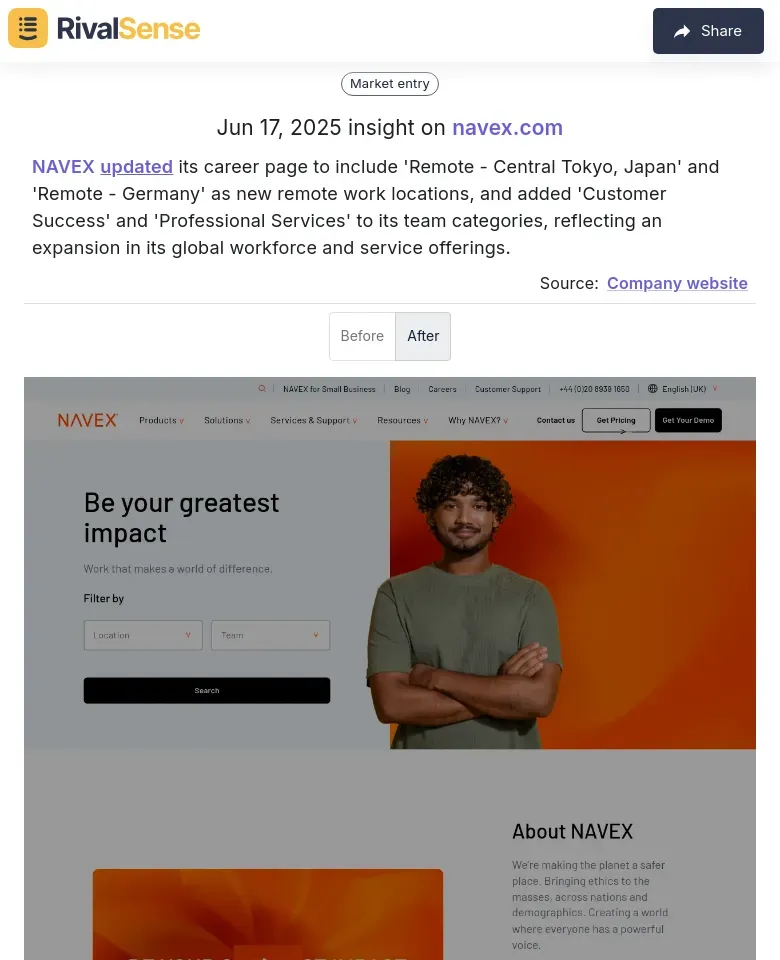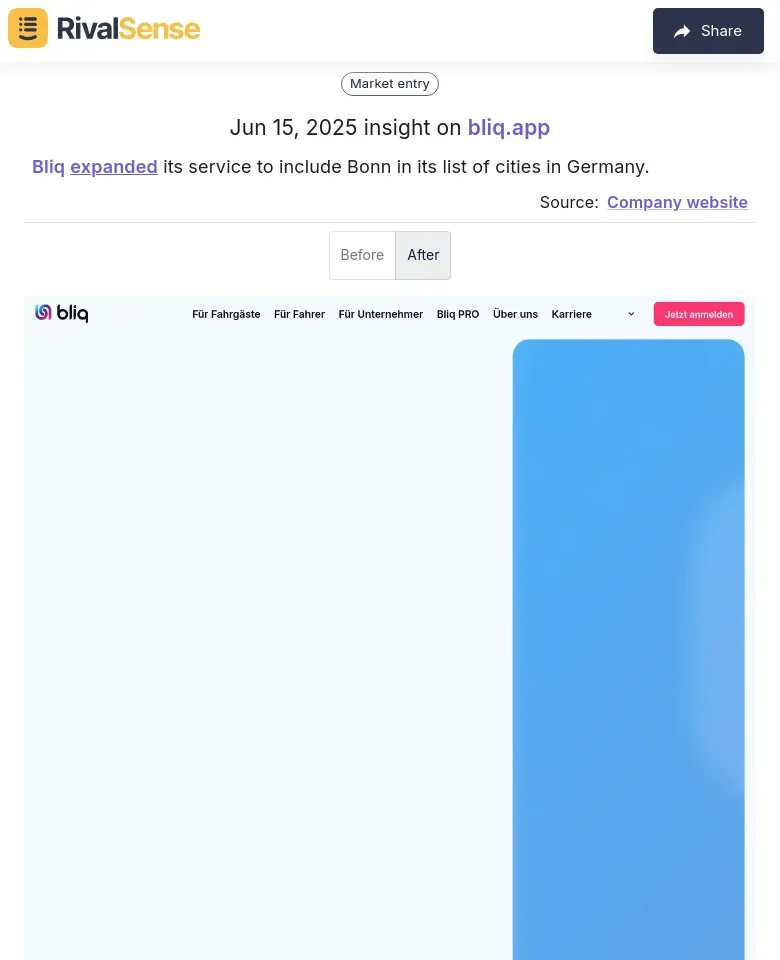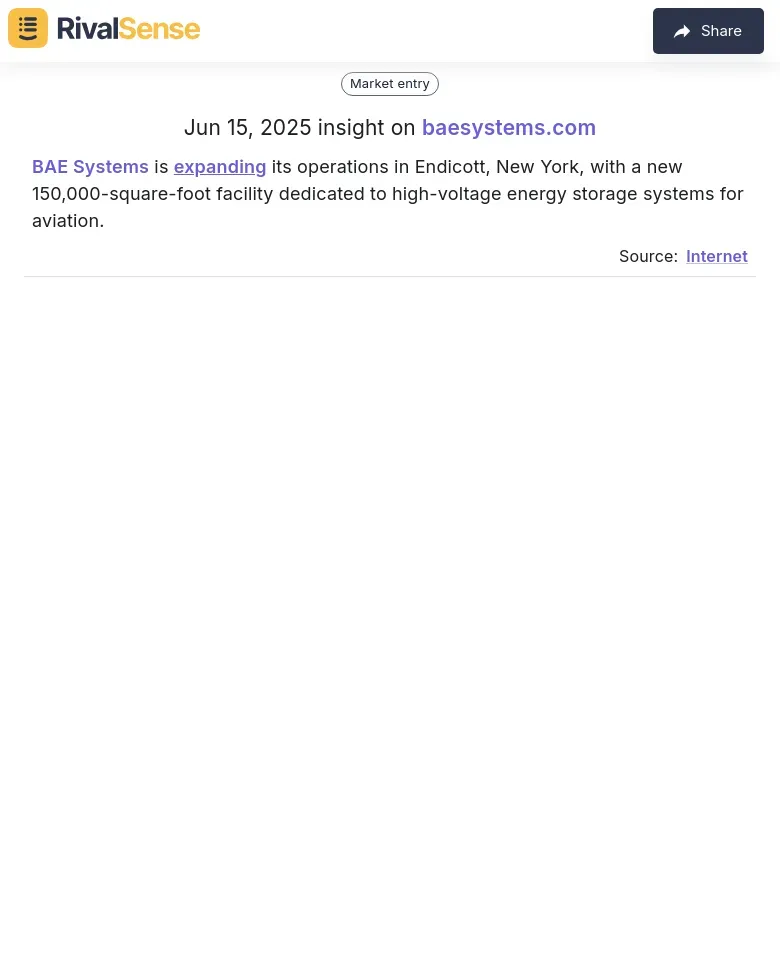Predictive Market Entry: Outsmart Competitors with Analysis Frameworks
Predictive market entry transforms how businesses approach new opportunities by anticipating market trends and competitor moves. By leveraging strategic analysis frameworks, companies can uncover hidden opportunities and threats, enabling proactive decision-making. Real-time competitor intelligence is crucial here—it provides the actionable insights needed to act swiftly and confidently. To implement this approach effectively:
- Identify Key Competitors: Focus on market dominators and rapid expanders
- Analyze Their Strategies: Use SWOT or Porter's Five Forces frameworks
- Monitor Real-Time Data: Track product launches, pricing changes, and expansions
- Spot Trends Early: Detect patterns in competitor behavior signaling market shifts
- Test Hypotheses: Pilot strategies before full-scale implementation
The goal isn't just reaction—it's prediction and strategic outmaneuvering. Integrating these steps turns competitor insights into sustainable competitive advantages.
Analyzing Competitor Workforce and Service Expansions
Workforce expansions and service additions reveal competitor priorities and market entry blueprints. When companies add new remote locations or service categories, they're signaling strategic shifts toward new markets or customer segments. These moves provide tangible evidence of resource allocation and growth vectors worth monitoring closely.
For example, NAVEX updated its career page to include 'Remote - Central Tokyo, Japan' and 'Remote - Germany' as new work locations while adding 'Customer Success' and 'Professional Services' team categories. This reflects deliberate global expansion and service diversification.

Why this matters: Tracking workforce changes provides early signals about market entry focus and operational scaling, helping you anticipate competitive threats in specific regions or service categories.
Practical analysis framework:
- ✅ Track Workforce Expansions: Monitor job postings and remote work policies for strategic priorities
- ✅ Analyze Service Additions: Identify patterns in new offerings to predict market focus
- ✅ Predict Resource Allocation: Correlate hiring spikes with expansion areas
By decoding these signals, you can adjust your market entry timing and positioning.
Geographic Expansion Insights
Geographic moves reveal competitors' market testing and scaling strategies. When companies enter new cities or regions, they're often validating market viability before committing larger resources. Sequential expansions typically indicate methodical growth plans worth reverse-engineering for your strategy.
Consider Bliq's recent expansion into Bonn, Germany—a strategic addition to its German service footprint. Such city-level expansions often serve as test cases for regional playbooks.

Why this matters: Geographic intelligence identifies competitor prioritization of specific markets, helping you spot emerging threats or underserved opportunities in your expansion radar.
Decoding geographic signals:
- Map Expansion Patterns: Track location sequences—urban hubs first often indicate density-focused strategies
- Analyze Local Response: Monitor customer adoption and marketing spend in new regions
- Identify Scaling Clues: Hiring surges or partner announcements often follow successful entries
| Expansion Signal | Strategic Implication |
|---|---|
| Multiple city entries | Testing regional viability |
| Headquarters relocation | Market commitment upgrade |
| Localized hiring | Service customization efforts |
Turn these insights into market prioritization decisions before competitors solidify positions.
Infrastructure and Facility Investments
Physical investments provide concrete evidence of competitive commitments and strategic bets. New facilities or specialized infrastructure often precede market shifts, revealing where competitors anticipate growth or technological disruption. These capital-intensive moves signal long-term plays rather than tactical experiments.
BAE Systems exemplifies this with its new 150,000-square-foot New York facility dedicated to aviation energy storage systems. This substantial investment signals strategic positioning in sustainable aviation technology.

Why this matters: Infrastructure developments expose competitors' technological bets and capacity planning, helping you anticipate industry shifts and align your R&D investments accordingly.
Actionable monitoring tactics:
- 🔍 Scour Public Records: Building permits and zoning changes
- 🔍 Analyze Hiring Patterns: Facility management and specialized engineering roles
- 🔍 Track Industry Events: New facility announcements at trade shows
| Investment Type | Strategic Insight |
|---|---|
| R&D facilities | Emerging technology focus |
| Manufacturing plants | Production capacity increases |
| Logistics hubs | Supply chain optimization |
Decode these physical commitments to forecast market developments before they materialize.
Building Your Predictive Market Entry Framework
Effective frameworks combine competitor monitoring with strategic analysis. Start by profiling key competitors' historical market entries—examine their timing, positioning, and resource allocation patterns. Integrate continuous monitoring through automated alerts for website changes, social signals, and regulatory filings.
Incorporate layered analysis techniques:
- SWOT Integration: Map competitor expansions to their strengths/weaknesses
- Trend Correlation: Cross-reference physical expansions with hiring and pricing data
- Pilot Testing: Simulate competitor moves in safe environments before market entry
📋 Implementation Checklist:
- Identify competitors' recurring entry patterns
- Establish real-time monitoring for expansion signals
- Conduct quarterly cross-functional analysis sessions
- Develop response playbooks for common scenarios
Case study approach: When a competitor struggles with localization (e.g., regulatory hurdles), bake compliance into your entry blueprint. Their stumbles become your guardrails.
Conclusion: Staying Ahead in the Competitive Landscape
Predictive market entry delivers first-mover advantages and optimized resource allocation in volatile markets. By transforming competitor expansions into strategic intelligence, you shift from reactive to proactive positioning. Consistent analysis of workforce movements, geographic plays, and infrastructure investments forms your early-warning system.
Maintain competitive agility through:
- 🔁 Monthly strategy refreshes based on competitor movements
- 📊 Performance benchmarking against expansion leaders
- 🧠 Dedicated competitive intelligence resources
Ready to operationalize these insights?
Try RivalSense for Free and get your first automated competitor report today. Our platform tracks expansion signals across websites, registries, and global sources—delivering actionable intelligence in weekly briefings.
📚 Read more
👉 Decoding Feather's Insurance Expansion: Strategic Implications & Action Steps
👉 Competitive Research for Executives: A Strategic Guide to Staying Ahead
👉 Boost Productivity: Benchmarking Tips for Financial Services
👉 How Sumsub's Pricing Shift Empowered Competitor Strategy
👉 Unlock Competitor Secrets: Master Twitter for Strategic Insights
